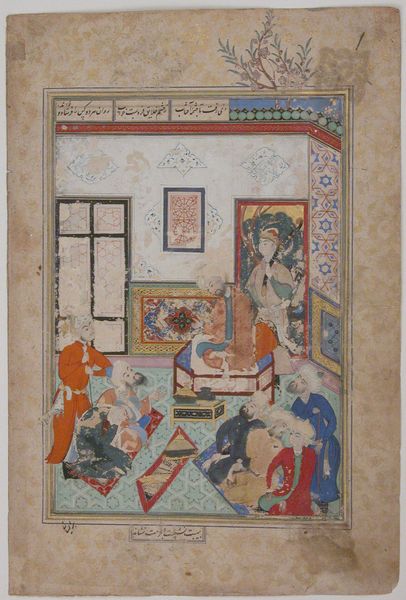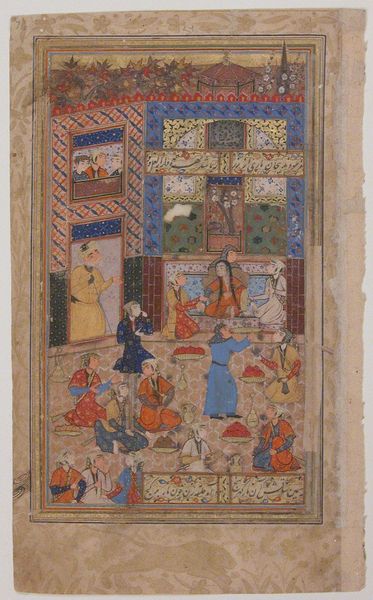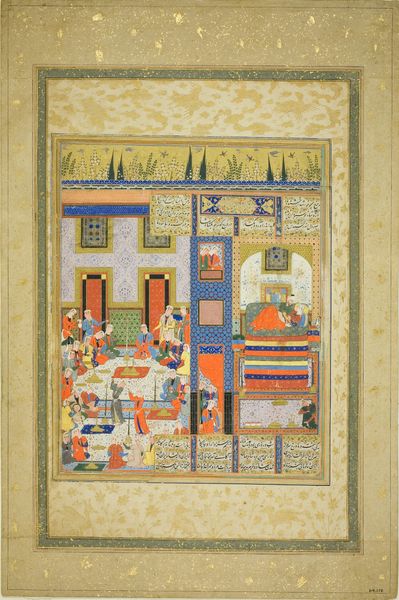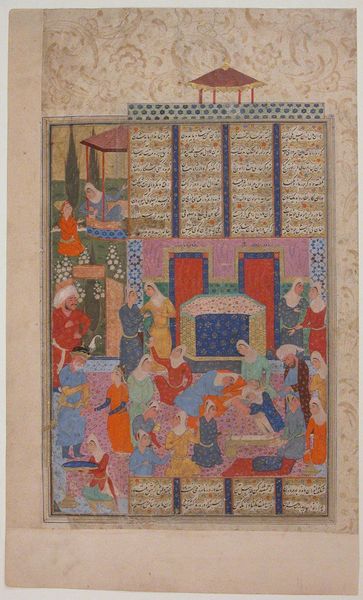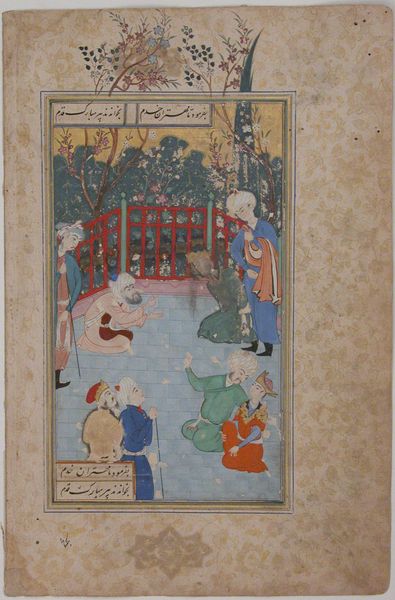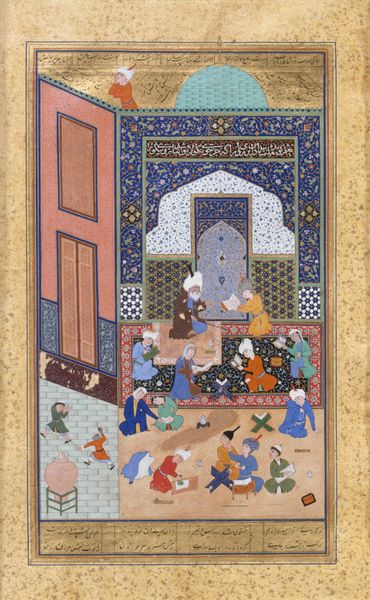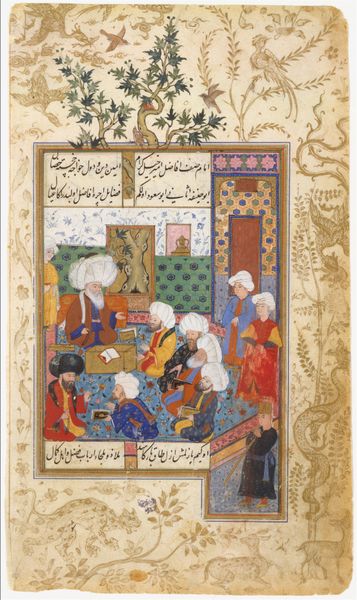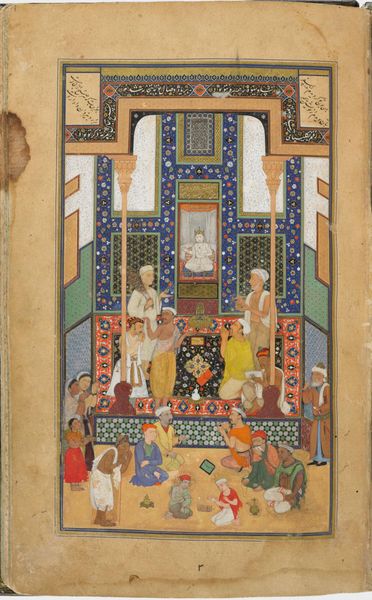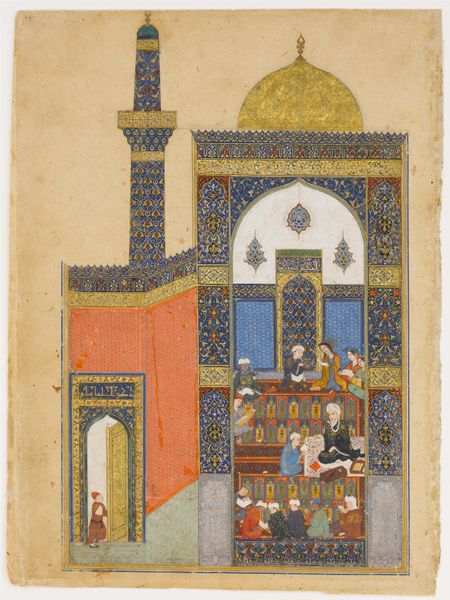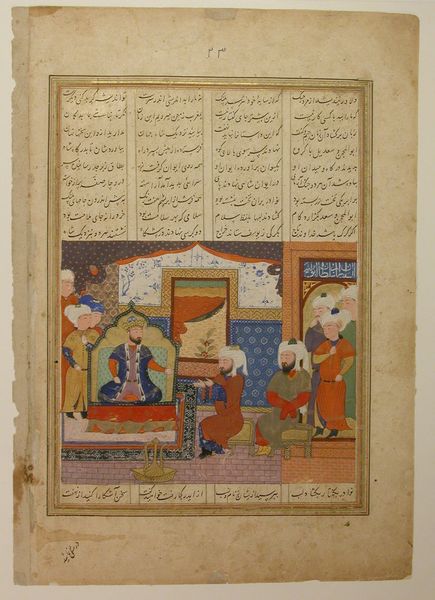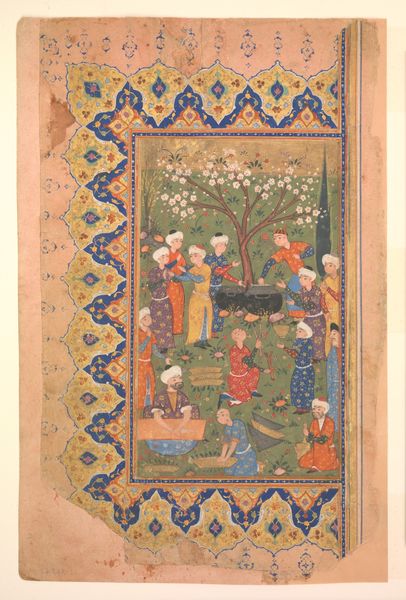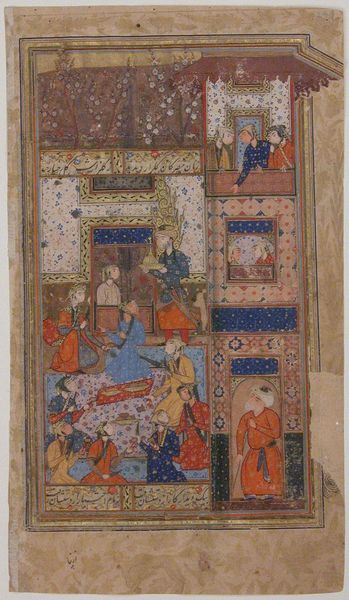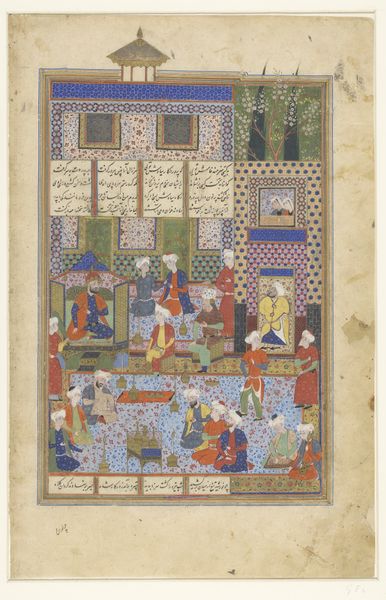
"A Fire-Worshipper Received at the Board of Abraham the Patriarch", Folio from a Bustan (Orchard) of Sa'di 17th century
0:00
0:00
painting, paper, watercolor, ink
#
portrait
#
water colours
#
narrative-art
#
painting
#
paper
#
watercolor
#
ink
#
coloured pencil
#
orientalism
#
islamic-art
#
miniature
Dimensions: H. 9 13/16 in. (24.9 cm) W. 6 9/16 in. (16.7 cm)
Copyright: Public Domain
Curator: This exquisitely detailed piece, titled "A Fire-Worshipper Received at the Board of Abraham the Patriarch," comes to us from a 17th-century folio from a Bustan (Orchard) of Sa'di, here at The Metropolitan Museum of Art. Editor: The visual field feels intentionally flattened, almost like a tapestry. It's immediately captivating, but also a little…claustrophobic? The figures seem compressed within the pictorial space. Curator: Well, the Persian miniature tradition often deliberately rejects Western perspective, prioritizing intricate detail and narrative clarity over realistic depth. The focus isn't on illusion, but on symbolic representation within the socio-religious context of the story of Abraham. Editor: Absolutely, and you can see that focus manifested in the arrangement of figures—a sort of hieratic scale at play. The color choices are bold and distinctive, contributing to an emotional atmosphere that is at once festive and restrained. Look at how the green and reds dominate, offsetting the blues and yellows of other figures. Curator: It is striking! The scene depicts Abraham, a key figure in Islam, welcoming a Zoroastrian fire-worshipper to his table. It’s part of Sa'di’s broader commentary in the Bustan about ethical conduct and religious tolerance, at a time of sectarian conflicts in Persia. Patronage and presentation of these tales was very dependent on a region's religious authorities. Editor: The meticulous brushwork evident in the textiles and architectural details is quite remarkable. It’s all about these contrasting textures; rough strokes near smoother colour washes. The interplay creates visual interest, almost a sense of vibration. Curator: I see the cultural exchange vividly brought to life here, advocating for compassion even towards those of different beliefs, and offering glimpses into the 17th-century society it reflects. This artwork transcends a mere depiction; it serves as a visual guide. Editor: Yes, exactly. The way the miniature merges diverse styles while establishing visual cohesiveness is what is most thought-provoking. There is no wasted space on this plane; a unified image with incredible visual impact and a very particular message.
Comments
No comments
Be the first to comment and join the conversation on the ultimate creative platform.
